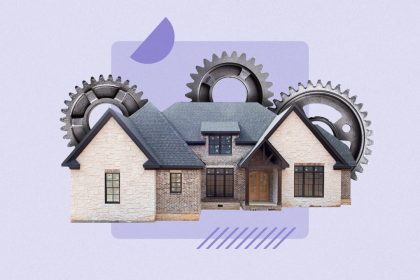Key takeaways
- Some personal lenders offer loans of up to $100,000, but $50,000 limits are more common.
- Your credit, income and current debt burden help the lender determine the loan amount you qualify for.
- Even if you qualify for a lender’s maximum amount, you should only borrow what you need and can afford to repay.
While some lenders offer $100,000 personal loans, that doesn’t always mean you’ll qualify for that much. How much of a personal loan you can get depends on your credit score, income and current debt. It also depends on the lender, as some have maximum loan amounts below $50,000.
Plus, just because you qualify for a high amount doesn’t mean you should borrow that much. When asking how much of a personal loan you can take out, be sure to consider how much you can afford to take out as well.
How big of a loan can I get?
Every lender offers different personal loan terms, including varying minimum and maximum loan amounts. The amount you can borrow also depends on loan type and lender eligibility requirements.
Where can I get a large loan?
When shopping for a large loan, be sure to put a heavy focus on the loan’s the interest rate. A high rate will make the loan more expensive, and with a large loan balance, costs can really add up quickly. While the common maximum loan amount is $50,000, some lenders offer loans of up to $100,000.
| Lender | Loan amounts | Rates | Repayment term |
| Alliant Credit Union | $1,000–$100,000 | Starting at 8.99% | 12–60 months |
| LightStream | $5,000–$100,000 | 6.49%-25.29% | 24–240 months |
| SoFi | $5,000–$100,000 | 8.99%-35.49% | 24–84 months |
Where can I get a small loan?
If you just need to borrow a small amount, the rate and repayment terms are still important to watch. Some companies that offer small personal loans are payday lenders with loan terms as short as two weeks. Other online installment lenders have interest rates in the double or triple digits.
Credit unions are a popular choice for smaller loan amounts because many feature loans under $1,000 with reasonable rates. However, you must be a member to get a loan from a credit union. Banks and online lenders may also offer smaller loans, with minimum amounts of $1,000.
What influences the amount you can borrow?
There are several factors that contribute to determining the amount you can borrow. The best thing you can do before you get a personal loan is to ensure your finances are in order. Your credit history and financial profile will not only determine whether you qualify, but also how much you can borrow and what your terms will be.
Income
Lenders want to know that you have a steady source of income and can afford to make your monthly payments as agreed. A higher income may unlock larger loan amounts, since you have more disposable income to put toward your loan payment. However, it also matters whether a significant percentage of your income is already allocated to debt payments.
Current debts
Your lender will consider your debt-to-income ratio (DTI) — the percentage difference between your monthly debt payments and your monthly gross income. Lenders view a high DTI as a sign that you can’t afford to take on any more debt. While some lenders may accept DTIs of up to 50 percent, they prefer ratios of 36 percent or lower. If your DTI is on the high side, work on paying down debt before borrowing again. With a lower DTI, you may also be able to qualify for a larger loan amount and a better interest rate.
Bankrate tip
Calculate your DTI by adding up your monthly debt payments, dividing by your gross monthly income and multiplying by 100. To avoid the mental math, you can also use a DTI calculator.
Credit score
Lenders use your credit score to determine your loan eligibility, set your interest rate and select your loan terms. Your score demonstrates how well you’ve managed your debts in the past, and is used by lenders to predict how likely you are to repay a new debt. Even if you have a high income and a low DTI, a low credit score can tank your odds of approval because it may indicate a history of late or missed payments, lack of experience with long-held debt or financial instability. You may still be able to get a personal loan for bad credit, but your rates may be as high as 36 percent.
Employment
You can get a personal loan without a job, but it may be more difficult to qualify for a high amount. Lenders want to know you’ll be able to pay back the loan and employment is the best way to show a steady stream of income that makes it possible to do so. While the lender may accept other income sources, like benefits, child support and contract income, they may prefer long-term, full-time employment as a more reliable source.
It may also be easier to qualify without employment if you insure your personal loan with collateral.
Collateral
While most personal loans are unsecured and don’t require collateral, some lenders also offer loans that are backed by assets, such as your car or home. These unique personal loans are secured loans and may offer better rates due to the added protection for the lender. Just make sure you can afford the loan payments — if you default on the loan, you could lose any asset you used as collateral.
The type of collateral you can provide varies by lender. The most commonly accepted assets include deposit accounts (like savings account balances or CDs) or personal vehicles. Best Egg offers a unique secured loan that’s backed by the light fixtures, built-in cabinets and vanities in your home.
Loan purpose
You can use a personal loan for almost anything, and your reason for borrowing may influence how much you can borrow. For example, some lenders may offer larger loan amounts to borrowers looking to finance a home improvement project.
How much can you afford to borrow?
The amount you can afford to borrow depends entirely on your unique financial situation. Review your current budget to determine how much you can comfortably afford to repay each month.
Then, use a personal loan calculator to find the loan amount, interest rate and loan term that fit your budget. Play around with each factor that influences the monthly payment to determine what you can afford. Get pre-qualified for a personal loan to estimate the interest rate you may receive.
Remember that the monthly payment is just one way to estimate a loan’s affordability — the long-term costs of borrowing are also important. A longer term would provide short-term relief by lowering the monthly payments. However, it would result in more interest accrual over the life of the loan, so you’ll pay more than you originally borrowed.
For example, a $20,000 loan with a 10 percent interest rate could cost thousands more in total interest paid over a longer term.
| Loan term | Monthly payment | Total interest paid |
| 3 years | $645 | $3,232 |
| 5 years | $425 | $5,496 |
| 7 years | $332 | $7,890 |
How to qualify for a larger loan
There are a few ways to increase your chances of qualifying for a large loan amount. The strategy (or strategies) that work best for you will depend on your goals and borrowing timeline.
- Consider a cosigner. A trustworthy friend or family member can act as a loan cosigner, and their good credit and stable income can improve your eligibility and may increase your potential borrowing amount. But keep in mind that a cosigner takes on the same borrowing responsibilities as you — and will also share the same consequences if you default.
- Compare multiple lenders. Rate shop with several personal loan lenders to find the one that offers you the best loan for your needs. While affordability is important, you’ll also want to pay attention to eligibility requirements, available loan terms and customer experience.
- Lower your DTI. If you can afford to postpone your loan application, focus on paying down your debts to reduce your DTI. The lower your debt is relative to your income, the more likely you’ll be to get approved for a larger loan. Aim for 36 percent or lower.
- Improve your credit score. If you don’t need the loan urgently, you can also work on improving your credit score. First, review your credit report and dispute any errors that may be affecting your score. Continue making on-time payments and avoid closing accounts, especially your oldest ones. Lower your credit utilization by paying down your debt, increasing your credit limit and avoiding large purchases.
Bankrate tip
A personal loan affects your credit score in a few different ways. An initial hard inquiry will have a temporary negative impact. However, over time, the loan will contribute to your credit mix, and your history of making on-time payments will help your score rise. But if you can’t afford the payments and default, your score will drop significantly.
Bottom line
Personal loan amounts vary depending on the lender you choose, your credit score and overall financial situation. Regardless of how much a lender offers, you should only borrow the amount necessary to cover the expense. Over-borrowing will result in paying unnecessary interest and fees.
Remember to consider not only the loan amount but also the personal loan interest rate associated with it. A high rate makes the loan more expensive — both in how much you’ll pay each month and the total interest you’ll pay over the life of the loan.
Read the full article here
















